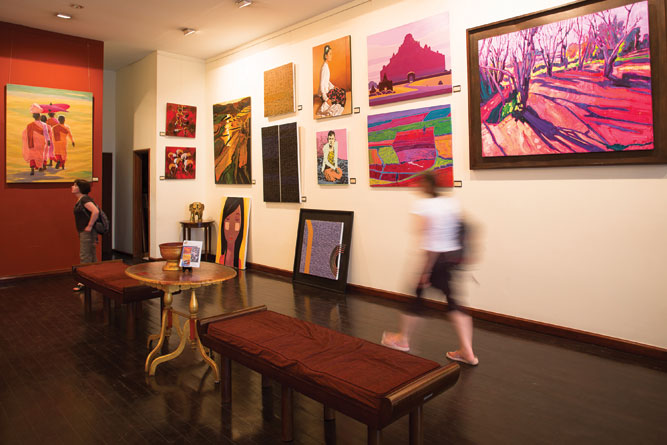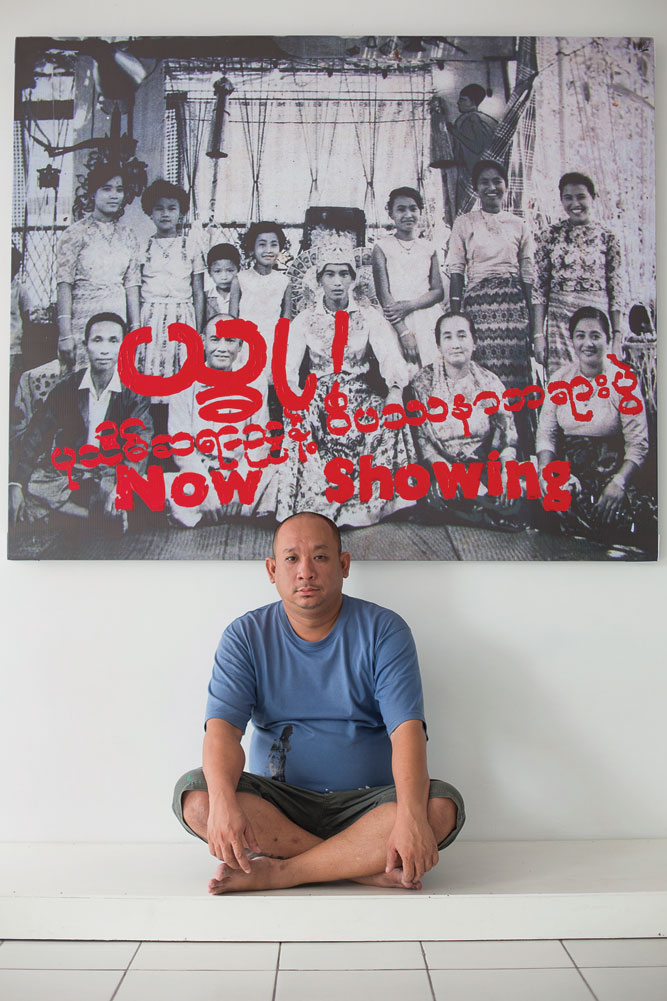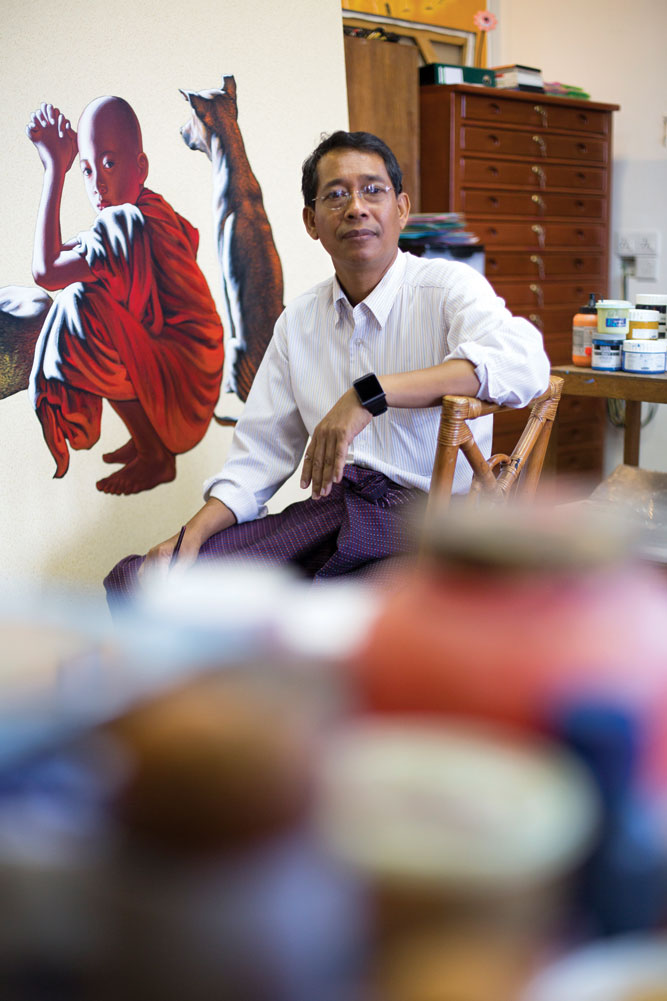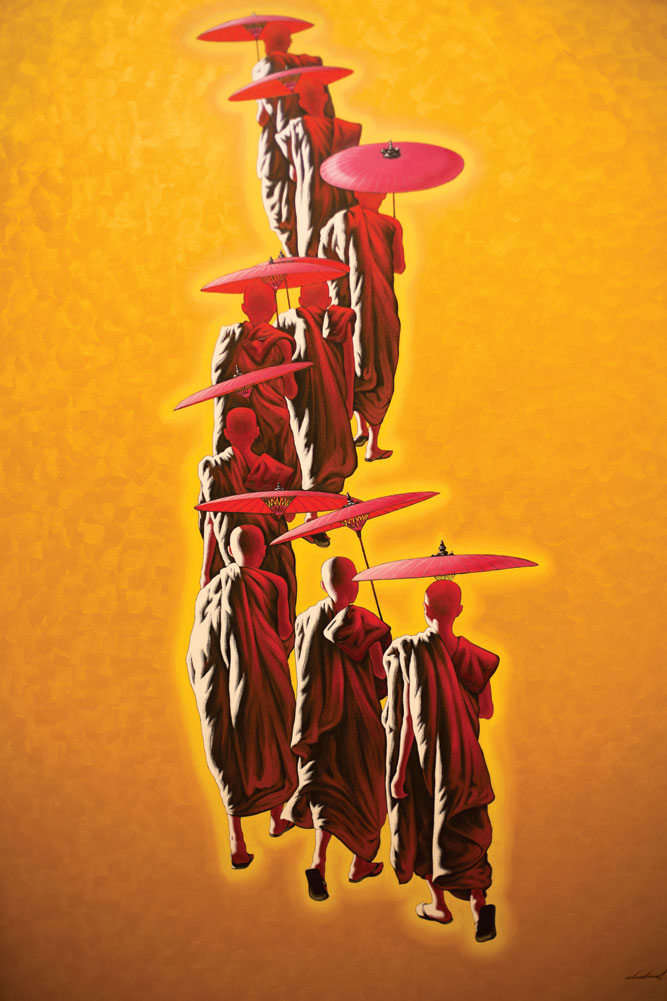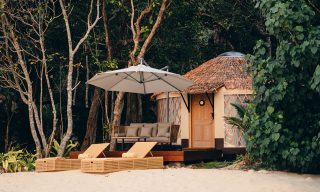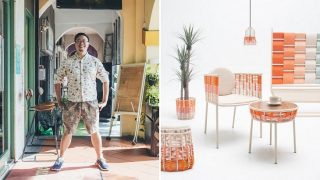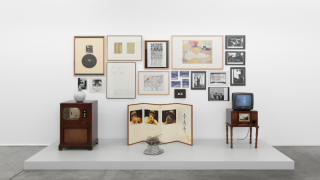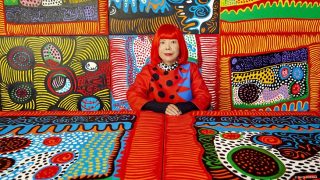For Nyein Chan Su, who just a few years ago held edgy exhibitions behind closed doors, the censors are no longer the major constraint on his work. “It’s getting easier to hold shows,” he says. “The biggest problem now is the banking system. We can’t transfer money easily into and out of the country; you can’t use credit cards, you have to pay cash. So it makes it hard for foreigners to buy art when they are here.”
I hear the same complaint from Yan Naing Tun, as we sit on the floor of his two-story house in a peaceful inner suburb of northern Yangon, not far from Inya Lake and the home of Aung San Suu Kyi. In a sunroom at the house’s entrance, a few canvasses lie half-finished beside a silkscreen, which the 33-year-old artist uses to emboss Burmese text over monochromatic scenes of everyday urban life. Tea shops are among his favorite subjects.
This has been a big year for Yan Naing Tun, who traveled to New York, Toronto, and Vienna as part of a group show. But like most Myanmar artists, he has a litany of horror stories about earlier run-ins with the censors. “It’s a lot better now; before they would ask, ‘Why did you paint a tea shop? Don’t these people have jobs?’ They also complained about one of my titles—Ghosts at the Teashop—and said I could only show it if I changed the name.”
And yet all the artists I meet express a sense of optimism and excitement at what the coming years will bring for Myanmar, not only for the artistic community, but also for the country as a whole. “Because of our experiences over many years, as artists, we’re still thinking, ‘Will it be okay if I do this? Will I have a problem?’ ” says Suu Myint Thein. “But when a stream can flow freely, it can create a lot of new, wonderful things.”


